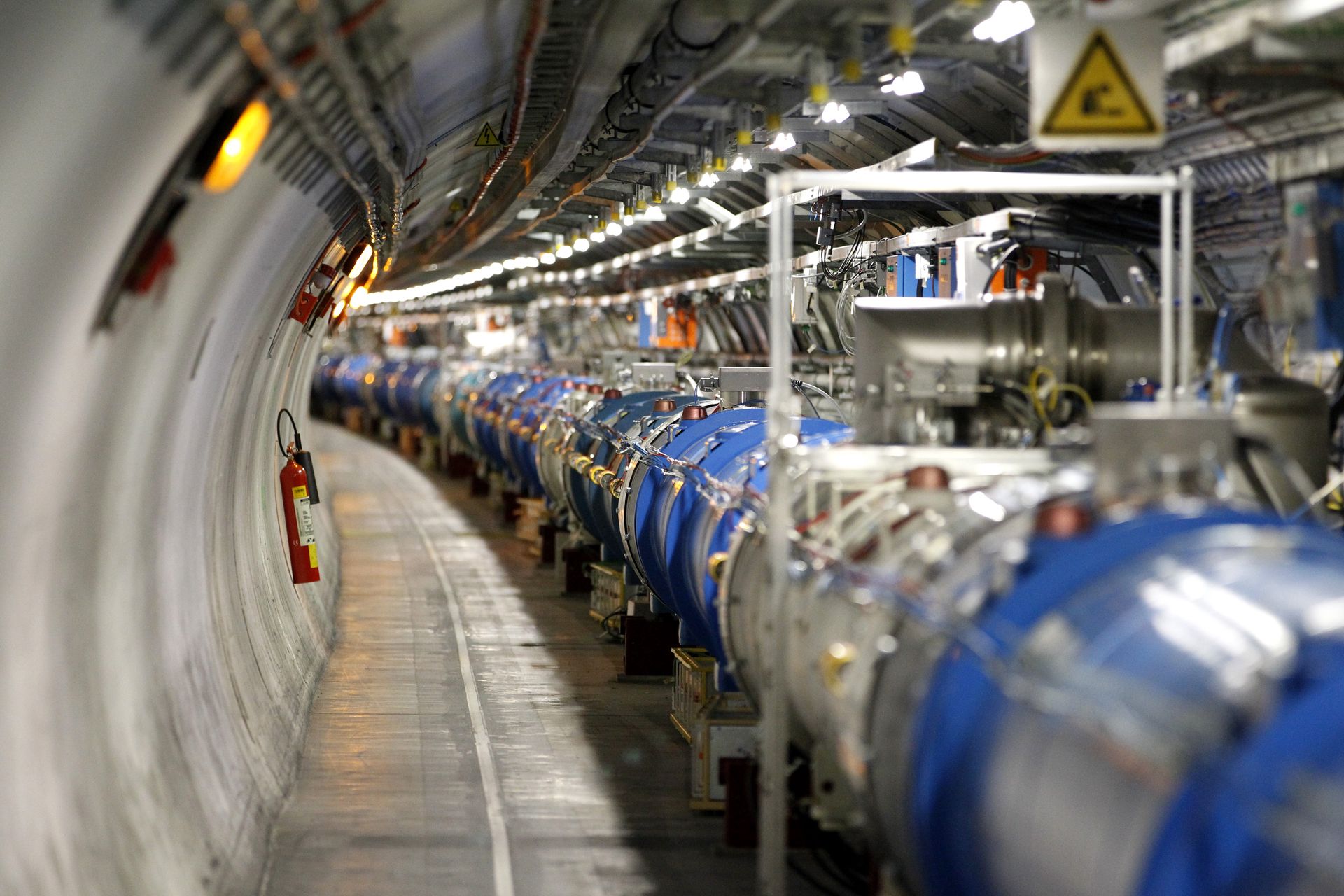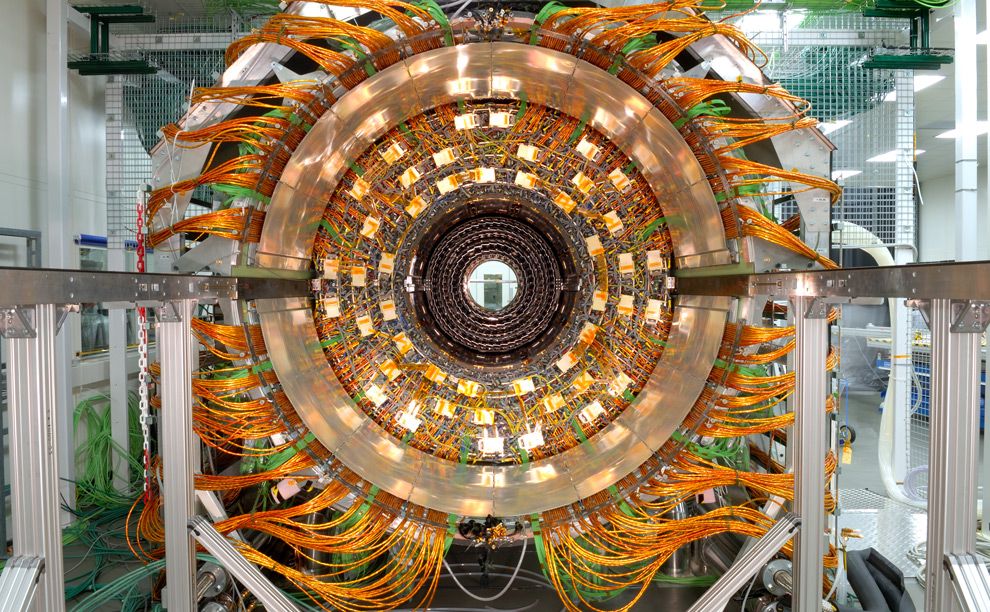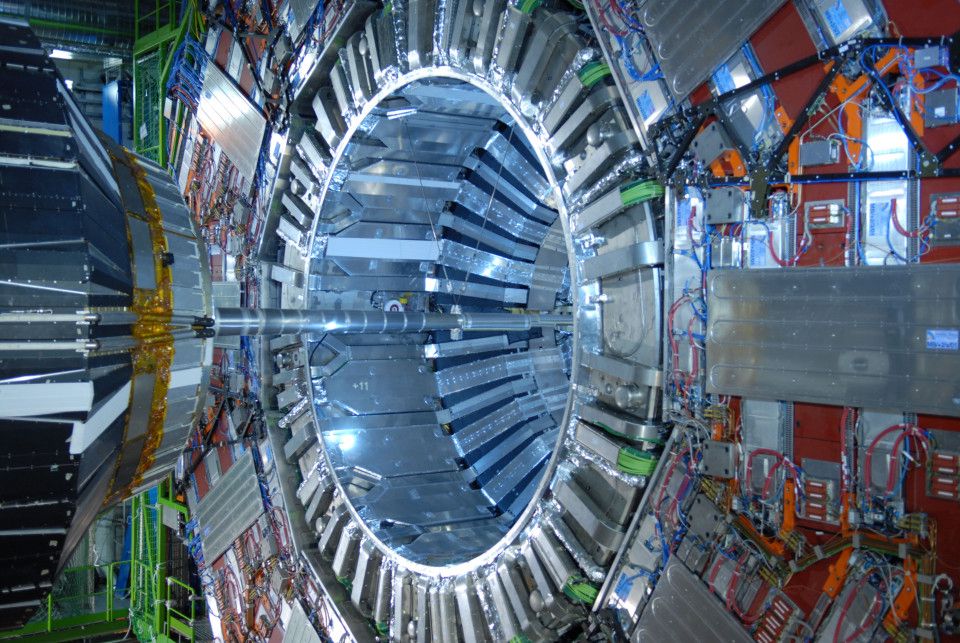Hadron Collider
Hadron Collider
There are some reports that the Hadron collider in CERN could destroy the earth. Is this even possible?
Let's see what the Hadron collider does and how it works. First of all the full name for the device is 'The Large Hadron Collider'. It's called 'Large' because it is the largest particle collider ever constructed. The tunnel it's located in has a circumference of 27 kilometers. That's really huge by comparison to any previous collider.
What does a particle collider do? The answer is obvious: it collides particles. Basically, you could think of it this way. Let's say you're a child and someone gives you a clock. You have no idea how the clock works or what's inside it. Because you're a child and have no patience, you decide to throw it on the ground and break it apart in order to see what makes it tick. Unfortunately, the pieces scatter all over the place and do not shed light on how they were put together inside the clock. This is basically what particle physicists do. They take particles like protons and smash them together at as great a velocity as they can and then try to figure out what the pieces that fly away from the collision are.
What does Hadron mean? The word comes from the idea of a composite particle that's composed of quarks held together by the strong nuclear force, such as protons and neutrons, and mesons, which are exotic particles associated with radiation.

P
How do they generate the particles and how do they accelerate them? A typical particle is a proton, which is a hydrogen atom's nucleus stripped of its associated electron. This is often achieved by ionizing hydrogen plasma. Once the proton ions are created they can be accelerated by using an oscillating electrostatic field. The use of strong quadrupole electromagnets wrapped around the collider tunnel's walls accelerates the proton to higher velocities and keeps it on a precise trajectory. The electromagnets are super-cooled in order to increase their magnetic fields.
Bunches of protons are accelerated to higher and higher velocities before coming together near detectors. Currently, 2,808 bunches with 115 billion protons in each bunch, can be brought together at the collision point.

The Hadron collider is capable of moving protons around the 27-kilometer tunnel at 11,000 revolutions per second. That means that a proton is circling the tunnel every 90 microseconds, which means that they're moving at only 3.1 meters per second slower than the speed of light. The speed of light is 299,792,458 meters per second. The violence of the collision is hard to comprehend. The energy is expressed as TeV or Tera (Trillion) electron volts. The Hadron collider is capable of colliding protons at 6.5 TeV.

How do the detectors work? That's a much more complicated question. There are four detectors around the collision point of the Hadron collider: ATLAS, CMS, ALICE, and LHCb. Each detector has a specific mission. A discussion of these would take a book.
Let's just say that the method of detecting the debris that blasts away from the particle collision point varies. The actual detectors weigh thousands of tons and involve super magnets and all sorts of sensitive imaging tricks. Most of the detectors consist of spectrometers and calorimeters that are connected to computers capable of processing massive amounts of data collected in only a few microseconds. The main mission is to measure the trajectory of each of the debris particles and determine its energy. These methods are very complicated and involve a lot of mathematics. The best way to think about it is to say that what these experimental detectors are looking for are surprises, radiation or particles that don't fit into the Standard Model, the organized categories of particles that are known.
To answer the main question of whether the Hadron collider could destroy the Earth by creating a black hole or a hole in spacetime; all I can say is that there isn't enough energy to do that. Any micro black holes that form would evaporate faster than my money at a casino. Besides, the device is not something from a Sci-fi movie. It's just a very complicated and sophisticated instrument.
Thanks for reading.
Bạn đang đọc truyện trên: AzTruyen.Top